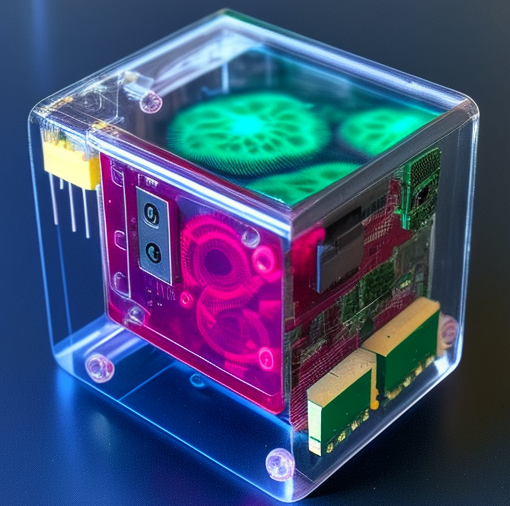The world of microcontrollers has witnessed a significant evolution over the years, and among the standout contenders, the Raspberry Pi Pico has emerged as a game-changer. In this article, we’ll delve into a detailed comparison between the Raspberry Pi Pico and other popular microcontrollers, shedding light on its unique features, advantages, and versatile use cases.
Introduction to Microcontrollers
Microcontrollers serve as the brains of countless electronic devices, powering everything from home appliances to robotics. They are compact integrated circuits that consist of a processor, memory, and input/output peripherals, making them the ideal choice for embedded systems.
Unveiling the Raspberry Pi Pico
The Raspberry Pi Pico is a recent addition to the Raspberry Pi lineup, and it has quickly gained attention due to its remarkable features and affordable price point. Powered by the RP2040 microcontroller, developed in-house by Raspberry Pi, the Pico offers a dual-core ARM Cortex-M0+ processor, clocked at 133MHz, and an array of GPIO pins.
Competing Microcontrollers in the Market
Several microcontrollers compete with the Raspberry Pi Pico, each catering to specific needs:
Arduino Uno
The Arduino Uno is a beloved choice for beginners and experienced makers alike. It boasts a vast community, a user-friendly IDE, and a range of shields for expanded capabilities.
ESP8266
Ideal for IoT applications, the ESP8266 offers built-in Wi-Fi functionality, enabling seamless connectivity to the internet and cloud services.
STM32 Series
STMicroelectronics’ STM32 microcontrollers are known for their power efficiency and performance. They cater to a wide spectrum of applications, from consumer electronics to industrial automation.
Adafruit Feather
Adafruit’s Feather series targets portability and ease of use. These microcontrollers come with various add-ons, known as FeatherWings, to enhance their functionality.
Feature Comparison
Comparing these microcontrollers reveals distinct strengths:
Processing Power and Clock Speeds
Raspberry Pi Pico: Dual-core ARM Cortex-M0+ at 133MHz. Arduino Uno: 8-bit ATmega328P at 16MHz. ESP8266: Tensilica Xtensa L106 at 80MHz. STM32 Series: ARM Cortex-M4 at various speeds.
GPIO Pins and Expandability
Raspberry Pi Pico: 26 programmable GPIO pins. Arduino Uno: 14 digital pins and 6 analog pins. ESP8266: GPIO pins with ADC capability. STM32 Series: Abundant GPIO with various functionalities.
Memory and Storage Capacities
Raspberry Pi Pico: 264KB of SRAM, no built-in storage. Arduino Uno: 2KB of SRAM, 32KB of Flash storage. ESP8266: 160KB of SRAM, 4MB of Flash storage. STM32 Series: Varied SRAM and Flash options.
Connectivity Options
Raspberry Pi Pico: No built-in Wi-Fi, requires external modules. Arduino Uno: No built-in Wi-Fi, shields available. ESP8266: Built-in Wi-Fi. STM32 Series: External Wi-Fi modules.
Programmability and IDEs
Raspberry Pi Pico: C/C++, MicroPython support. Arduino Uno: Arduino IDE, C/C++. ESP8266: Arduino IDE, MicroPython. STM32 Series: STM32CubeIDE, other IDEs.
Advantages of Raspberry Pi Pico
The Raspberry Pi Pico comes with several distinct advantages:
RP2040 Microcontroller
The custom RP2040 microcontroller ensures excellent performance and flexibility, making it ideal for a wide range of applications.
Programmable I/O State Machines
One of the standout features is the programmable I/O state machines. This allows precise, low-latency I/O handling without extensive CPU intervention.
Community and Support
Raspberry Pi’s thriving community guarantees ample support, resources, and tutorials, making the Pico an attractive choice for beginners and experts alike.
Use Cases of Raspberry Pi Pico
The Raspberry Pi Pico finds its application across various domains:
IoT Prototyping
With its GPIO capabilities and programmable state machines, the Pico is an excellent choice for prototyping IoT devices.
Automation Systems
The Pico’s processing power and GPIO pins make it suitable for controlling and automating systems in homes, offices, and industries.
Educational Projects
Its ease of use, coupled with comprehensive learning resources, positions the Pico as a fantastic tool for educational projects.
Performance Benchmarks
When it comes to performance:
Speed and Responsiveness
The Raspberry Pi Pico and STM32 microcontrollers offer impressive speed, while Arduino Uno and ESP8266 are geared towards specific applications.
Power Efficiency
The STM32 series excels in power efficiency, making it suitable for battery-operated devices, while the Pico strikes a balance between power and performance.
Overcoming Challenges
It’s important to note potential challenges:
Learning Curve
Raspberry Pi Pico might have a steeper learning curve for beginners compared to the simplicity of Arduino.
Real-time Applications
While all microcontrollers handle real-time tasks, specific applications might demand specialized solutions.
Future Potential and Upcoming Developments
The Raspberry Pi Foundation has a track record of innovation. Expect exciting updates, enhancements, and community contributions.
Conclusion
In the dynamic landscape of microcontrollers, the Raspberry Pi Pico stands out with its RP2040 microcontroller, versatile I/O state machines, and a supportive community. Whether you’re an IoT enthusiast, a hobbyist, or an engineer, the Pico offers a powerful platform for turning your ideas into reality.










Leave a Reply